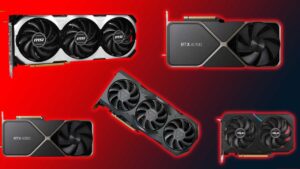Introduction:
In a groundbreaking development, Microsoft has announced a significant update to its iconic AI Button on Keyboard , marking the first change in nearly 30 years. Additionally,The highlight of this transformation is the introduction of a dedicated key for Windows Copilot, Microsoft’s innovative AI platform.
This move signals Microsoft’s commitment to integrating generative AI seamlessly into personal computing, anticipating a paradigm shift in the way users interact with their devices.
Join TechoVedas Community here
The Copilot Key: 3 Reasons Microsoft has added an AI Button on Keyboard
The new Copilot key is designed to serve as a portal to Microsoft’s Windows Copilot, acting as a smart assistant accessible at any moment.
When pressed, the key brings up the Copilot interface, allowing users to perform web searches, locate personal content, and access various PC features through the app’s generative AI functionality.
The aim is to make Copilot an integral part of the user experience, enhancing convenience and efficiency.
1. Boosting Accessibility and User Friendliness:
- Lowering the Barrier to AI: The Copilot key offers a one-click gateway to AI assistance, making it easily accessible even for non-technical users. Additionally,This could democratize AI and encourage broader adoption.
- Streamlining Workflows: Imagine composing emails, scheduling meetings, or even editing documents with a simple keystroke and AI guidance. The Copilot key promises efficiency and a more intuitive computing experience.
- Contextual Help Right at Your Fingertips: No more digging through menus or searching online for assistance. The Copilot key can contextually understand your task and provide tailored AI support directly within the application you’re using.
Read more: What is special about ARM for the biggest IPO in recent times?
2. Empowering Users and Redefining Productivity:
- AI as a Personal Assistant: Think of the Copilot key as a miniaturized, always-available assistant. It can offer suggestions, automate tasks, and anticipate your needs, making you more productive and focused.
- Personalization and Individualization: AI can learn your preferences and working style, adapting the Copilot key’s functionality to your specific needs and tasks. Additionally, this can lead to a highly personalized and efficient computing experience.
- Futureproofing the PC: Integrating AI into the core hardware like keyboards showcases Microsoft’s vision for the future of computing.Moreover, By making AI readily available, they’re preparing users for a more immersive and collaborative AI-powered future.
Read More: A New Revolutionary Circuitry Helps to Keep Your Electronics Cool Forever – techovedas
3. Strategic Positioning and Competitive Advantage:
- AI differentiator: In a crowded PC market, Microsoft is staking its claim on AI as a key differentiator. The Copilot key symbolizes their commitment to AI integration and innovation.
- Partnering with OpenAI: By leveraging OpenAI’s ChatGPT technology, Microsoft gains access to advanced AI capabilities and further bolsters its AI leadership.
- Shaping the Future of Work: By focusing on productivity and efficiency, Microsoft positions itself as a leader in the evolving landscape of work, where AI plays a central role.
Microsoft’s Vision for the Future of Personal Computing
By collaborating with original equipment manufacturers (OEM) to integrate the Copilot key into their devices, Microsoft is underscoring its belief that generative AI is indispensable to the future of personal computing.
Additionally, this strategic move positions Copilot as a cornerstone in the evolving landscape of AI-driven technology, promising users a more intuitive and intelligent computing experience.
Partnerships and Unveilings
While Microsoft has not disclosed specific OEM partners launching with the Copilot key, it has indicated that companies will start unveiling desktops and laptops featuring this innovative functionality in the coming days.
Moreover, the upcoming CES 2024 event is expected to provide a closer look at the Copilot key’s capabilities and showcase the collaborative efforts between Microsoft and its hardware partners.
Historical Context: Windows Copilot and Microsoft’s AI Initiatives
Microsoft’s push towards AI integration is not a singular event but a part of a broader initiative that gained momentum throughout 2023.
The introduction of the Bing chatbot, enhancements to the Edge browser, and the unveiling of Copilot for Microsoft 365 are clear indicators of Microsoft’s dedication to leveraging AI across various aspects of its business.
Additionally,CEO Satya Nadella has emphasized that AI advancements will play a pivotal role in shaping the future of the company.
The AI Movement in Semiconductors
The AI revolution is not limited to software advancements alone; semiconductor giants like AMD, Intel, and Qualcomm have introduced AI-specific chips with dedicated neural processors.
Additionally, these chips are designed to handle tasks unique to AI applications, contributing to the overall evolution of AI-powered personal computing.
PC Market Resurgence and AI Adoption
This bold move by Microsoft coincides with the expected resurgence of the PC market, set to return to growth in 2024. Additionally, Analysts predict that the combination of aging devices from the pandemic-driven surge and the introduction of new AI-capable PCs will drive this growth.
The AI PC movement represents the first significant technological shift in personal computing since the widespread adoption of smartphones and tablets.
Conclusion:
Microsoft’s decision to introduce a dedicated Microsoft AI Button Copilot on its keyboards signifies a strategic step towards integrating AI seamlessly into the daily computing experience.
Additionally, as the PC market undergoes a resurgence and AI adoption becomes more prevalent, Microsoft’s innovative approach positions the company at the forefront of the evolving landscape, promising users a more intelligent and intuitive computing future.
The Copilot key is not just a physical addition to the keyboard but a symbol of Microsoft’s vision for the next era of personal computing.



